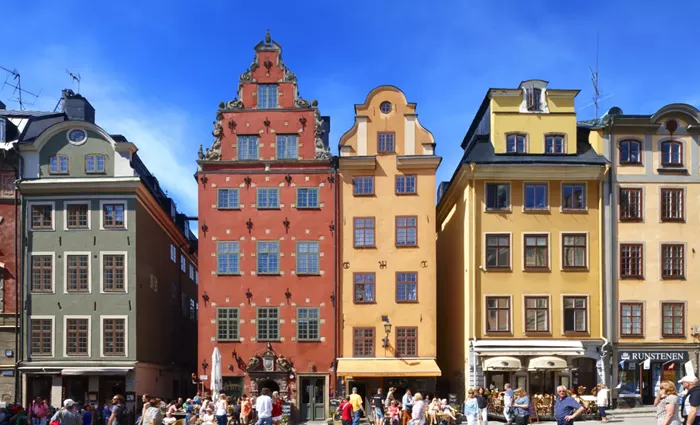Sweden’s Changing Immigration Policies: A Shift from Acceptance to Restriction.
Sweden, known for its liberal values and progressive society, has recently altered its approach to immigration. With a population of 10.5 million, the country has been recognized for its stable economy and high quality of life. However, this reputation faced challenges beginning in 2014 when large numbers of asylum-seekers, particularly from war-torn Syria, began arriving in Sweden and across Europe.
In response to the influx, then-Prime Minister Fredrik Reinfeldt urged the Swedish public to “show tolerance” during this time of change. He acknowledged the challenges but called for patience and compassion. In 2014, Sweden registered 81,301 asylum applications, which nearly doubled to almost 163,000 in 2015. By November 2015, the Swedish government stated it required a “respite” from the rising numbers of asylum-seekers.
Prime Minister Stefan Löfven expressed his dismay at the country’s inability to maintain its high level of asylum reception. At a news conference, he noted, “It pains me that Sweden is no longer capable of receiving asylum seekers at the high level we do today. We simply cannot do anymore.” This marked the beginning of a significant shift in Sweden’s immigration policy.
Since that time, the Swedish immigration policy has become increasingly stringent. The center-left coalition that governed until late 2022 introduced tighter measures, and the current conservative administration, led by the Moderate Party and supported by the far-right Sweden Democrats, has furthered these restrictions. The government is now promoting a “paradigm shift” aimed at achieving “sustainable immigration.”
Currently, about 2.1 million residents, or 20% of the population, were born abroad, primarily from countries such as Syria, Iraq, Iran, Somalia, and Afghanistan. The new center-right government has implemented policies targeting irregular or undocumented immigration. These include stricter asylum laws, tougher regulations for family reunifications, and initiatives to deport migrants, including financial incentives for voluntary repatriation. Additionally, the government plans to limit the influx of low-skilled laborers, proposing new immigration laws that require work permits for immigrants to earn at least 80% of the median Swedish salary, approximately 35,600 kronor ($3,455) per month.
The Swedish government has openly stated its intentions to overhaul immigration policies, aiming to combat fraud and what it refers to as a “shadow society” of undocumented migrants. Officials argue that these measures will address associated issues, such as rising gang violence and organized crime within low-income, immigrant communities.
While the government claims to uphold “dignified reception standards,” it emphasizes that those without valid protection grounds or legal rights must be expelled. Trade unions have raised concerns about potential labor shortages resulting from these restrictive policies, while human rights organizations warn that these measures could lead to further marginalization of vulnerable populations. One particularly controversial proposal, known as the “snitch law,” would require public sector employees to report undocumented individuals to authorities.
The shift in immigration policy has sparked frustration among those who once welcomed refugees. Jacob Lind, a researcher at Malmö University, noted that many Swedes who supported asylum-seekers now feel betrayed by the government’s abrupt policy changes. He stated, “Before November 2015, people were told to ‘open your hearts,’ but then the government shifted position. Now, it’s harder to not just arrive in Sweden but also to live here.”
Lind criticized the government for blaming migrants for Sweden’s challenges, arguing that integration takes time and that the administration is using migrants as scapegoats for broader societal issues.
This change in Sweden’s approach to immigration reflects a wider trend seen across Europe. A decade ago, EU member states were encouraged to accept asylum-seekers fleeing conflicts in the Middle East. By the end of 2016, around 5.2 million refugees and migrants had reached Europe, with Germany taking in over a million.
As anti-immigration sentiment has grown, right-wing parties advocating for strict immigration controls have gained support. The Swedish government reports that its restrictive policies are effective, stating that for the first time in 50 years, there are more emigrants than immigrants. The Justice Ministry has noted a decline in asylum-seeker numbers and predicts the lowest number of applications since 1997.
Economists, however, are divided on the economic implications of these policies. Morten Lund, chief economist at JPMorgan Scandinavia, suggests that lower immigration could lead to slower economic growth and potential labor shortages in some sectors. He notes, “All else equal, growth would be lower due to fewer working hours and possibly lower productivity.” While Lund acknowledges that restrictive policies could lead to slightly inflationary effects, he emphasizes the uncertainty surrounding these outcomes.
Overall, Sweden’s immigration policies have shifted significantly in recent years, moving from a once-welcoming stance to a more restrictive approach that raises concerns among various sectors of society.
Related topics:
- How Anti-Immigrant Laws, Regardless of Their Outcome, Impact Migrants
- FEMA Did Not Use Emergency Relief Funds to Provide Housing for Illegal Immigrants
- Kamala Harris Stands by Her Immigration Record: “Solutions Are Within Reach”


